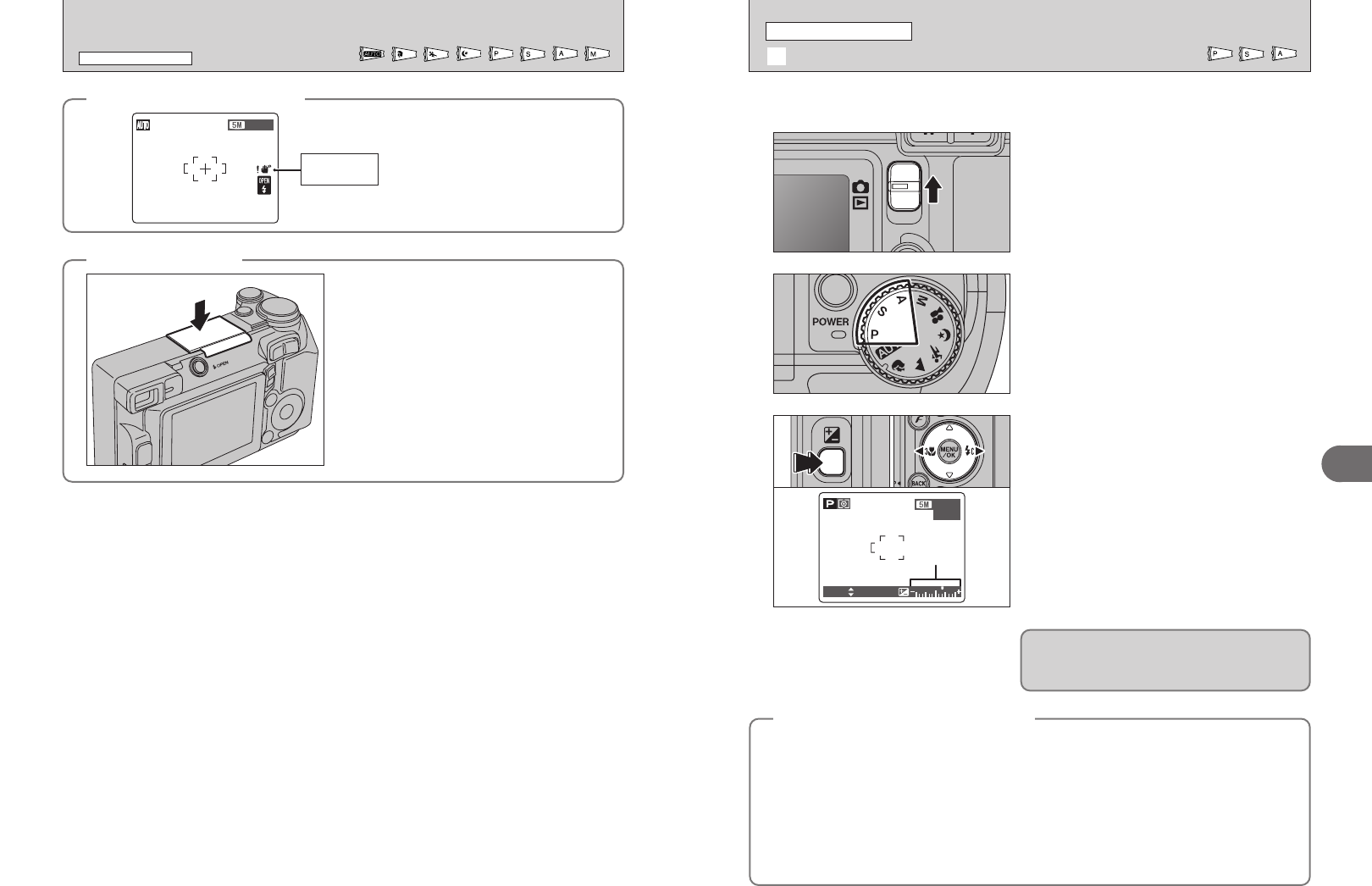
41
Advanced Features
3
Exposure
compensation
indicator
Use this function for shots to get the correct brightness (exposure), such as shots with extremely
high contrast between the subject and the background.
Set the Mode switch to “q”.
1
Set the Mode dial to “N”, “M” or “<” mode.
2
1Hold down “D” button.
2Press “d” or “c” to set the compensation value.
The symbol indicating the compensation direction
(“–” or “+”) turns yellow. The “D” icon also turns
yellow while exposure compensation is being set
and then turns blue after setting is completed.
h Compensation range
–2 EV to +2 EV (13 steps in 1/3 EV increments)
●
!
Exposure compensation cannot be used in the “B”, “m”,
“
,”, “.”, “/”, “>” and “r” modes.
●
!
Exposure compensation is disabled in the following
situations:
When “
d” (Forced flash) or “b” (Red-eye reduction) mode is
used and the scene is dark.
This setting is retained when the mode is changed
or the camera is turned off (“
D” icon appears). Set
the exposure compensation to “0” unless
compensation is required.
01 02
3
40
◆
Suppressed flash
◆
Pressing the flash down changes the camera to
Suppressed flash mode.
Use this mode for taking pictures using indoor
lighting, for shots taken through glass, and for
photography in places such as theaters or at indoor
sporting events where the distance is too great for
the flash to be effective. When you use Suppressed
flash, the selected white balance function (➡P.47)
operates so that natural colors are captured along
with the ambience of the available light.
●
!
Use a tripod to avoid camera shake, particularly for shots in
the dark when the selected flash mode is Suppressed
flash.
●
!
See P.19, 102 for information on the camera shake
warning.
d FLASH
PHOTOGRAPHY FUNCTIONS
Available Photography mode:
D EXPOSURE COMPENSATION
PHOTOGRAPHY FUNCTIONS
Available Photography mode:
◆
To obtain the optimum brightness
◆
Adjust the exposure compensation according to the level of brightness or darkness in the image.
hWhen the subject appears too bright
Try a negative (–) compensation setting.
This will make the overall image darker.
hWhen the subject appears too dark
Try a positive (+) compensation setting.
This will make the overall image brighter.
■ Guide to compensation
i Backlit portraits: +2 steps to +4 steps (+
DW EV to +1DQ EV)
i Very bright scenes (such as snowfields) and highly reflective subjects: +3 steps (+1 EV)
i Shots made up predominantly of sky: +3 steps (+1 EV)
i Spotlight subjects, particularly against dark backgrounds: –2 steps (–
DW EV)
i Scenes with low reflectivity, such as shots of pine trees or dark foliage: –2 steps (–
DW EV)
◆
Flash pop-up fault warning
◆
If the flash pop-up fault warning is displayed, we
recommend you use the flash.
Flash pop-up
fault warning


















